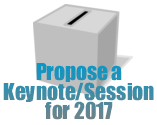Follow NEMC
The Use of Defined Substrate Technology for the Detection of Total Coliforms, Fecal Coliforms and E.coli (Indicator Bacteria) for Reuse Water
Oral Presentation
Prepared by G. Dichter
IDEXX , One iDEXX Drive, Westbrook, ME, 04092, United States
Contact Information: gil-dichter@idexx.com; 207-556-4687
ABSTRACT
Colilert and Colilert-18 are approved EPA methods for drinking and waste water detecting indicator bacteria, acting as a surrogate for pathogens. Pathogens are difficult to detect requiring skilled technicians to perform the testing. The technology will be reviewed along with state requirements and labs that are using this technology.
Reuse water plays a significant role for a source of water especially in the West as well as parts of the South due to severe droughts and population shifts. Without reuse water, we will have a severe shortage of water in the future.
Colilert and Colilert-18 are approved EPA methods for drinking and waste water detecting indicator bacteria (total coliforms, fecal coliforms and E.coli), acting as a surrogate for the possible presence of pathogens. Testing for pathogens such as protozoa and viruses requires technical expertise, expensive equipment and large volumes of water for detection. Testing for indicator bacteria using Define Substrate Technology is fast and easy to perform and does not require confirmation with a well established track record.
The technology based on Defined Substrate Technology will be presented as well as how to use this technology. Incubation is from 18-24 hours at 35°C and a positive result is either a color or fluorescent signal using a 365nm 6 watt UV light. Quantification is obtained by use of the Quanti-Tray sealer and this will be reviewed.
At present, US EPA does not regulate reuse water. Each state has requirements for either total coliforms, fecal coliforms or E.coli defining the acceptable level before discharge as well as a maximum allowable count. Some states requirements falls under NPDES permits while other states classify requirements based on drinking water. This will be reviewed showing examples for several different states. The final reuse water in most states goes through tertiary treatment prior to discharge into wells or use for watering parks, golf courses, or for irrigation. Some of the reuse water may be sent to water treatment plants to be mixed with water from other wells. Singapore presently uses reuse water and desalinated water for their drinking water and I will review this along with some other examples.
Presently there are a number of facilities using this technology for testing reuse water and will be discussed.
Oral Presentation
Prepared by G. Dichter
IDEXX , One iDEXX Drive, Westbrook, ME, 04092, United States
Contact Information: gil-dichter@idexx.com; 207-556-4687
ABSTRACT
Colilert and Colilert-18 are approved EPA methods for drinking and waste water detecting indicator bacteria, acting as a surrogate for pathogens. Pathogens are difficult to detect requiring skilled technicians to perform the testing. The technology will be reviewed along with state requirements and labs that are using this technology.
Reuse water plays a significant role for a source of water especially in the West as well as parts of the South due to severe droughts and population shifts. Without reuse water, we will have a severe shortage of water in the future.
Colilert and Colilert-18 are approved EPA methods for drinking and waste water detecting indicator bacteria (total coliforms, fecal coliforms and E.coli), acting as a surrogate for the possible presence of pathogens. Testing for pathogens such as protozoa and viruses requires technical expertise, expensive equipment and large volumes of water for detection. Testing for indicator bacteria using Define Substrate Technology is fast and easy to perform and does not require confirmation with a well established track record.
The technology based on Defined Substrate Technology will be presented as well as how to use this technology. Incubation is from 18-24 hours at 35°C and a positive result is either a color or fluorescent signal using a 365nm 6 watt UV light. Quantification is obtained by use of the Quanti-Tray sealer and this will be reviewed.
At present, US EPA does not regulate reuse water. Each state has requirements for either total coliforms, fecal coliforms or E.coli defining the acceptable level before discharge as well as a maximum allowable count. Some states requirements falls under NPDES permits while other states classify requirements based on drinking water. This will be reviewed showing examples for several different states. The final reuse water in most states goes through tertiary treatment prior to discharge into wells or use for watering parks, golf courses, or for irrigation. Some of the reuse water may be sent to water treatment plants to be mixed with water from other wells. Singapore presently uses reuse water and desalinated water for their drinking water and I will review this along with some other examples.
Presently there are a number of facilities using this technology for testing reuse water and will be discussed.


